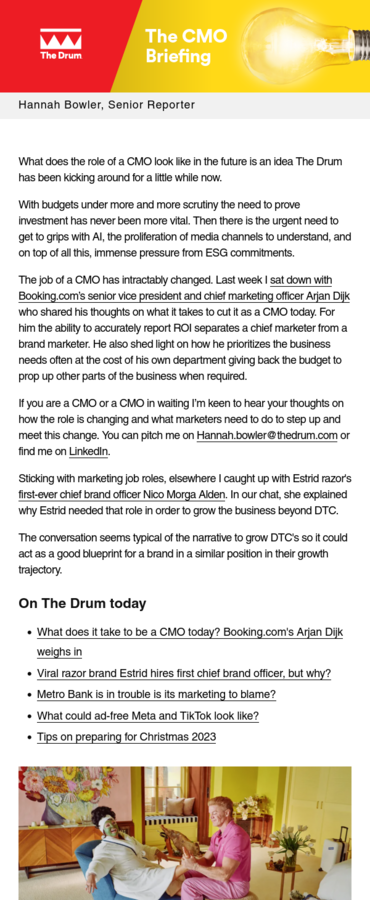300m jobs could become automated around the world, plus other key AI stats
Advancements in AI are being made by the day. Here are some key figures that can help you understand this revolutionary technology’s past, present and future.

Images created by Midjourney using the prompt: “A futuristic computer screen displaying numbers.”
Artificial intelligence (AI) has been around for decades. Still, it has dramatically captured public attention in recent months, thanks mainly to the release of generative AI platforms like ChatGPT, Midjourney and Dall-E 2. Every marketer suddenly seems to be talking about AI, and brands are gearing up for the impending wave of intelligent machines that are cresting the horizon and will eventually wash over virtually every industry.
To help you wrap your mind around the currently unfolding AI revolution, we’ve compiled this list of illuminating statistics and figures about the technology’s past, present and future. [Note: Like our glossary of AI terms, we’ll update this list regularly, so we recommend checking in occasionally to see what’s been added.]
Advertisement
$119.78bn: The estimated value of the global AI market in 2022, according to a recent report from Precedence Research.
$1,597.1bn: The estimated value of the global AI market by 2030, per Precedence Research.
$7.9bn: The estimated value of the global generative AI market size in 2021, according to a recent report from Acumen Research and Consulting.
$110.8bn: The estimated value of the global generative AI market size by 2030, according to Acumen Research and Consulting.
Advertisement
30%: The percentage of outbound messages from large companies that will be created by generative AI by 2025, according to an October 2022 report from Gartner.
35%: The percentage of companies that “reported using AI in their business,” according to the IBM Global AI Adoption Index 2022.
42%: The percentage of companies that reported “exploring AI,” per the IBM Global AI Adoption Index 2022.
66%: The percentage of companies that “are either currently executing or planning to apply AI to address their sustainability goals,” according to the IBM Global AI Adoption Index 2022.
Suggested newsletters for you
60%: The percentage of IT professionals in China and India who report that “their organization already actively uses AI,” per the 2022 IBM data. IBM also notes that that figure is a dramatically higher rate of adoption than in markets like South Korea (22%), Australia (24%), the US (25%) and the UK (26%).”
1950: The year in which British mathematician Alan Turing – in a paper titled Computing Machinery and Intelligence – first theorized the concept of what would later be known as AI. Turing also first conceptualized the idea of digital computers in 1936.
1.56tn: The number of words in the dataset initially used to program LaMDA, a generative AI model developed by Google.
175bn: The number of parameters used by GPT-3 – a collection of large language models developed by OpenAI, which serves as the framework for ChatGPT – to generate text.
5: The number of days that passed after the launch of ChatGPT in November 2022 for the generative AI model to reach more than one million users.
10 million: The factor by which the processing speed of today’s computer microprocessors exceeds that of the human brain. In other words: your brain is 10m times slower than contemporary computers – and that gulf is only expected to widen as computing technology continues to advance.
1971: The year that Intel introduced the 4004, the world’s first microprocessor.
298/400: The score that GPT-4 scored on the Uniform Bar Exam (the test that aspiring lawyers must pass to receive a license to practice law in the US), landing it in around the 90th percentile. Its predecessor, GPT-3.5, scored a 213/400, placing it around the 10th percentile.
More than $13bn: The amount that Microsoft has invested in OpenAI – the AI lab behind the ultra-popular chatbot ChatGPT – over three separate rounds of funding beginning in 2019, according to a January report from The New York Times.
May 11, 1997: The date on which an AI model developed by IBM called Deep Blue defeated chess grandmaster Garry Kasparov, forever dispelling the notion that chess mastery was a uniquely human pursuit. According to IBM, Deep Blue could analyze around 200mn possible chess moves every second. The linguist Noam Chomsky has reportedly said that an AI defeating a human being at chess is about as impressive as a bulldozer defeating a human being in a weightlifting competition.
31%: The mean response in a survey of 4,200 AI researchers – published in August by the AI Impact project – estimating the likelihood that the long-term impact of high-level machine intelligence (HLMI) on humanity is likely to be “on balance bad” or “extremely bad.” In better news, the mean respondent in that same survey also estimated that there was a 45% chance that the long-term impact would be “extremely good,” “on balance good,” or “more or less neutral.”
Advertisement
Nearly 70%: The percentage of “content marketers [who] believe [that] AI writing tools such as ChatGPT will replace at least some of their writers over the next five years,” according to a recent report from digital marketing agency BMV.
$700,000: The approximate amount that OpenAI pays per day to run ChatGPT, according to a recent report from The Information. Most of these costs are reportedly associated with running the servers upon which the AI chatbot is based.
56%: The percentage of cybersecurity professionals who “are concerned about hackers using AI-powered tools to steal passwords,” according to a recent survey conducted by Password Manager.
300mn: The number of full-time jobs worldwide that could become automated thanks to advancements in AI, per an April 2023 report from Goldman Sachs.
61%: The percentage of Americans who believe that AI “could threaten civilization,” according to a recent survey from Reuters and Ipsos.
71%: The percentage of Americans who “are concerned of the impact AI could have on jobs and society,” according to a recent poll conducted by Ipsos. The poll also found that “three in four (76%) are also concerned about deepfakes driving misinformation.”
Advertisement
58.87mn (eight out of ten): The number of women in the US workforce whose jobs are “highly exposed to generative AI automation” compared with 48.62 million (six out of ten) men. “Overall,” the report found, “21% more women are exposed to AI automation than men even though men outnumber women in the workforce.”
76%: The percentage “of consumers [who] are concerned with misinformation from artificial intelligence (AI) tools such as Google Bard, ChatGPT and Bing Chat,” per a report from Forbes Advisor published in June 2022.
$407bn: The estimated value that the global AI market will reach by 2027 – compared to $86.9bn in 2022 – according to an August 2022 report from MarketsandMarkets.
For more on the latest happenings in AI, web3 and other cutting-edge technologies, sign up for The Emerging Tech Briefing newsletter here.


